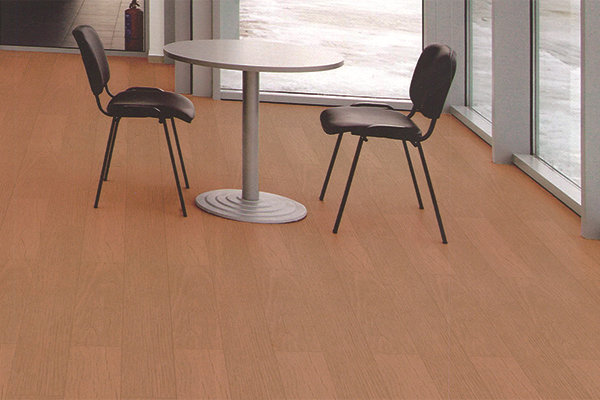How To Install Commercial Vinyl Flooring Roll?

Installing commercial vinyl flooring rolls typically involves the following steps:
Prepare the Subfloor: Ensure that the subfloor is clean, dry, and level. Remove any debris, dust, or existing flooring materials. Repair any cracks, holes, or uneven areas in the subfloor.
Acclimate the Flooring: Allow the vinyl flooring rolls to acclimate to the room's temperature and humidity for at least 24-48 hours before installation. This helps prevent issues such as expansion or contraction after installation.
Measure and Cut the Flooring: Measure the dimensions of the room accurately and cut the vinyl flooring rolls accordingly, leaving a few inches of excess material along the edges to trim later.
Apply Adhesive (if required): Depending on the type of vinyl flooring and the manufacturer's instructions, you may need to apply adhesive to the subfloor before installing the vinyl. Use a recommended adhesive and follow the manufacturer's guidelines for application.
Roll Out the Flooring: Roll out the vinyl flooring across the subfloor, starting from one end of the room and working towards the other. Make sure to leave a small gap (usually around 1/8 inch) between the flooring and the walls to allow for expansion.
Trim Excess Material: Once the flooring is in place, use a utility knife or vinyl cutter to trim the excess material along the edges of the room. Be sure to cut accurately to achieve a clean and precise finish.
Adhere the Seams (if required): If installing multiple rolls of vinyl flooring, carefully align the seams and use a recommended seam sealer or adhesive to join them together securely. Follow the manufacturer's instructions for seam sealing.
Roll and Press: After installing the flooring, use a floor roller or hand roller to roll over the entire surface to ensure proper adhesion and remove any air bubbles or wrinkles. Press down firmly along the edges and seams to ensure they are securely bonded to the subfloor.
Allow for Cure Time: Depending on the type of adhesive used, allow the installed flooring to cure for the recommended time before allowing foot traffic or placing heavy objects on it.
Finish Edges: Install baseboards or molding around the perimeter of the room to cover the expansion gap and provide a finished look.
It's essential to follow the manufacturer's specific instructions for the vinyl flooring product you are installing, as installation methods may vary depending on the type and brand of flooring. Additionally, if you're not experienced with flooring installation, it may be helpful to consult with a professional installer for guidance or assistance.





